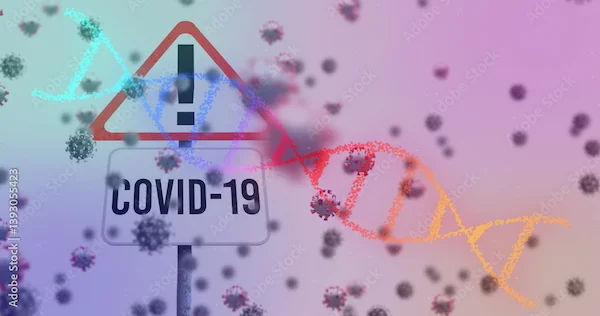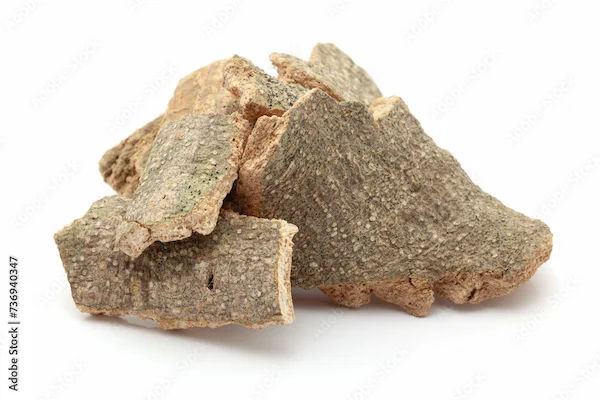Monsoon Water Borne Diseases
Learn about common monsoon water-borne diseases, their causes, symptoms, and effective prevention tips to stay safe during the rainy season. Protect yourself from infections like cholera, typhoid, and dysentery with proper hygiene and precautions.

Written by Dr.Sonia Bhatt
Last updated on 3rd Jul, 2025
During the monsoon season, various illnesses can emerge due to the wet and humid conditions. Airborne illnesses such as the common cold, cough, and flu are highly contagious and can spread easily through respiratory droplets and close contact. Influenza, which can lead to more severe symptoms and complications, particularly affects vulnerable populations. Water-borne illnesses are also prevalent; typhoid, caused by contaminated food and water, presents with symptoms like fever and abdominal pain, while cholera can result in severe diarrhoea and dehydration, posing significant health risks. Jaundice, or Hepatitis A, affects the liver and spreads through contaminated food and water, alongside other gastro-intestinal infections caused by bacteria and viruses. Leptospirosis, transmitted through water contaminated with animal urine, leads to flu-like symptoms. Additionally, mosquito-borne illnesses, including malaria, dengue, and chikungunya, thrive in this season. Malaria is caused by the Plasmodium parasite, while dengue and chikungunya, both transmitted by Aedes mosquitoes, are characterised by high fever and severe joint pain. Taking necessary precautions can help mitigate these health risks and ensure a safer monsoon experience.
Common Water-Borne Diseases During Monsoon
The World Health Organisation (WHO) reports that over 3.4 million people in India suffer from water-borne diseases, with children being especially vulnerable due to their developing immune systems. The primary water-borne illnesses during the monsoon include:
1. Gastro-intestinal Infections: Illnesses such as diarrhoea, vomiting, and gastroenteritis are often caused by consuming contaminated or stale food and water. Diarrhoea can range in severity and is characterised by watery stools, abdominal cramps, and nausea. To prevent these infections, it is essential to drink clean, purified water, maintain proper hygiene, and eat freshly prepared meals.
2. Typhoid: This disease, caused by the Salmonella typhi bacteria, spreads through contaminated food and water, particularly in areas with poor sanitation. Symptoms include prolonged fever, headaches, and abdominal discomfort. Vaccination is advisable for individuals in high-risk regions, along with drinking boiled water and avoiding street food.
3. Cholera: This highly contagious disease arises from contaminated food and water, with the risk increasing during heavy rainfall. Symptoms typically include severe diarrhoea, vomiting, and dehydration. To reduce the risk of cholera, ensure access to clean water, avoid raw or undercooked foods, and practice good hygiene.
Causes and Transmission of Water-Borne Diseases
Water-borne diseases mainly occur due to the consumption of contaminated drinking water, which can also affect food and beverages. During the monsoon season, increased humidity raises the risk of exposure to harmful microbes, leading to a higher incidence of illness.
The primary causes of water-borne diseases can be summarised as follows:
1. Contaminated Water: This occurs when water sources become polluted with sewage, industrial waste, or agricultural runoff, as well as through contamination of natural water bodies.
2. Contact with Contaminated Water: This happens when individuals come into contact with polluted surface water, such as during swimming, or use contaminated water for drinking and cooking.
Additionally, inadequate sanitation and hygiene practices, such as insufficient handwashing facilities and poor food preparation methods, play a significant role in spreading these diseases. A lack of knowledge about proper hygiene can exacerbate the problem, particularly in households, schools, and public areas.
Flaws in water treatment and distribution systems can also introduce pathogens into the water supply. Aging infrastructure, irregular water supply, and ineffective treatment processes may permit contaminants to enter drinking water. Furthermore, improper storage of water at home can lead to additional contamination, turning otherwise safe water into a source of disease transmission.
Symptoms of Water-Borne Diseases
Water-borne illnesses are caused by pathogens, including bacteria, viruses, and parasites, that contaminate water sources. While anyone can be affected, young children, the elderly, and individuals with weakened immune systems are at higher risk for severe illness.
Common Symptoms:
Diarrhoea
Nausea and vomiting
Fever and chills
Headaches and muscle aches
Some symptoms require immediate medical attention, such as:
Severe abdominal pain
High fever (above 39.4°C or 103°F)
Bloody diarrhoea
Signs of severe dehydration (extreme thirst, dry mouth, minimal urination, severe weakness, dizziness)
Persistent vomiting that prevents retaining fluids
Diagnosis of Water-Borne Diseases
Diagnosing water-borne diseases typically involves:
1. Clinical Assessment: Evaluating symptoms, including their onset and severity, along with recent travel and exposure to contaminated water.
2. Medical History: Providing details about water sources and recent travel to help identify potential causes.
3. Physical Examination: Checking for dehydration, fever, and abdominal tenderness.
4. Laboratory Testing:
Stool Samples: To identify bacteria, parasites, or pathogens.
Blood Tests: To detect infection markers, such as elevated white blood cell counts.
Viral Tests: For infections like Hepatitis A, to find specific viral antigens.
PCR Tests: For accurate identification of pathogen genetic material.
Cultures: To isolate specific bacterial strains for treatment guidance.
5. Imaging: Techniques like ultrasounds or X-rays may be used to assess complications.
6. Travel History: Informing the healthcare provider about recent travel helps identify regional pathogens.
Key Populations at Risk of Developing Waterborne Diseases
Certain groups are more vulnerable to waterborne diseases due to a variety of environmental and health factors. Understanding these populations is essential for effective prevention and intervention strategies.
Lack of Clean Water: Communities without access to safe drinking water face an elevated risk of waterborne diseases.
Poor Sanitation: Insufficient sewage systems and inadequate waste disposal methods heighten the risk of contamination.
Crowded Living Conditions: Close quarters in densely populated areas can accelerate the spread of diseases.
Age: Young children, the elderly, and those with weakened immune systems are especially at risk.
Malnutrition: Impaired immunity from malnutrition makes individuals more susceptible to infections.
Travel: Exposure to new pathogens while abroad can increase the likelihood of contracting waterborne diseases.
Natural Disasters: Disruptions to water supply systems during emergencies often result in contamination.
Prevention Strategies Against Waterborne Diseases
To reduce the risk of waterborne diseases, consider the following strategies:
Ensure the safety of your water supply by boiling, filtering, or using purifiers, particularly during the monsoon season when contamination risks are higher.
Regularly wash your hands with soap and clean water, especially after using the toilet, changing diapers, or touching potentially dirty surfaces.
Use hand sanitiser with at least 60% alcohol when clean water is not available; keep it readily accessible.
Choose food from vendors and establishments that maintain high hygiene standards, avoiding those with questionable practices.
Consult your healthcare provider about vaccinations for diseases like typhoid and hepatitis A to strengthen your immunity.
Stay well-hydrated by drinking boiled or treated water.
Minimise the consumption of outside food and maintain good hygiene to reduce the risk of fungal infections.
Wear light, long-sleeved clothing and follow a balanced diet to support your immune system.
Thoroughly wash fruits and boil vegetables before eating.
Consider having light meals and using acidic solutions like vinegar to clean fruits and vegetables to eliminate harmful bacteria.
Only consume bottled, boiled, or chemically treated water when in areas with poor sanitation.
Avoid ingesting water while swimming in pools, lakes, or rivers.
Wash fruits and vegetables thoroughly before consumption.
Practise good hygiene, particularly before preparing or eating food.
Regularly check and maintain your home's water system to ensure its safety.
Treatment and Management of Waterborne Diseases
The treatment for waterborne diseases depends on the specific illness and its cause, whether bacterial, viral, or parasitic:
Rehydration: Restore lost fluids with oral rehydration solutions (ORS) for mild cases; severe cases may need IV fluids.
Antibiotics: Bacterial infections like cholera and typhoid are treated with specific antibiotics to reduce symptoms.
Antiviral Medications: Supportive care is provided for viral diseases like Hepatitis A, as specific antivirals may not be available.
Antiparasitic Drugs: Parasitic infections, such as giardiasis, are treated with appropriate medications.
Supportive Care: Recovery involves rest, proper nutrition, and hydration
Complications of Waterborne Diseases
Waterborne diseases can cause several serious complications, particularly if untreated or in those with weakened immune systems:
Dehydration: Severe fluid loss from diarrhoea and vomiting can be life-threatening, especially in children and the elderly.
Electrolyte Imbalance: Disruption of vital electrolytes can lead to weakness, dizziness, and abnormal heart rhythms.
Malnutrition: Frequent infections can hinder nutrient absorption, increasing the risk of malnutrition and compromising immunity.
Chronic Infections: Some pathogens may lead to persistent infections requiring extended treatment.
Organ Damage: Diseases like amoebiasis and schistosomiasis can harm vital organs, including the liver and intestines.
Secondary Infections: Weakened immunity heightens susceptibility to additional infections.
Economic Impact: Outbreaks strain healthcare resources and lead to financial losses.
Fatalities: Severe cases can result in death, particularly in areas with limited medical care or among vulnerable populations.
Conclusion
While most monsoon diseases are usually not severe, it’s important to take precautions. Early detection and good hygiene can help prevent these illnesses. During the monsoon, ensure your water is safe, practise proper hygiene, and be mindful of food and waste management. Following these guidelines allows you to enjoy the season while minimising health risks. Waterborne diseases result from microorganisms or contaminants that pollute water sources, leading to infections through consumption or contact. These infections can have lasting effects, potentially weakening your immune system and gut function, complicating recovery.
Consult Top General Physician




